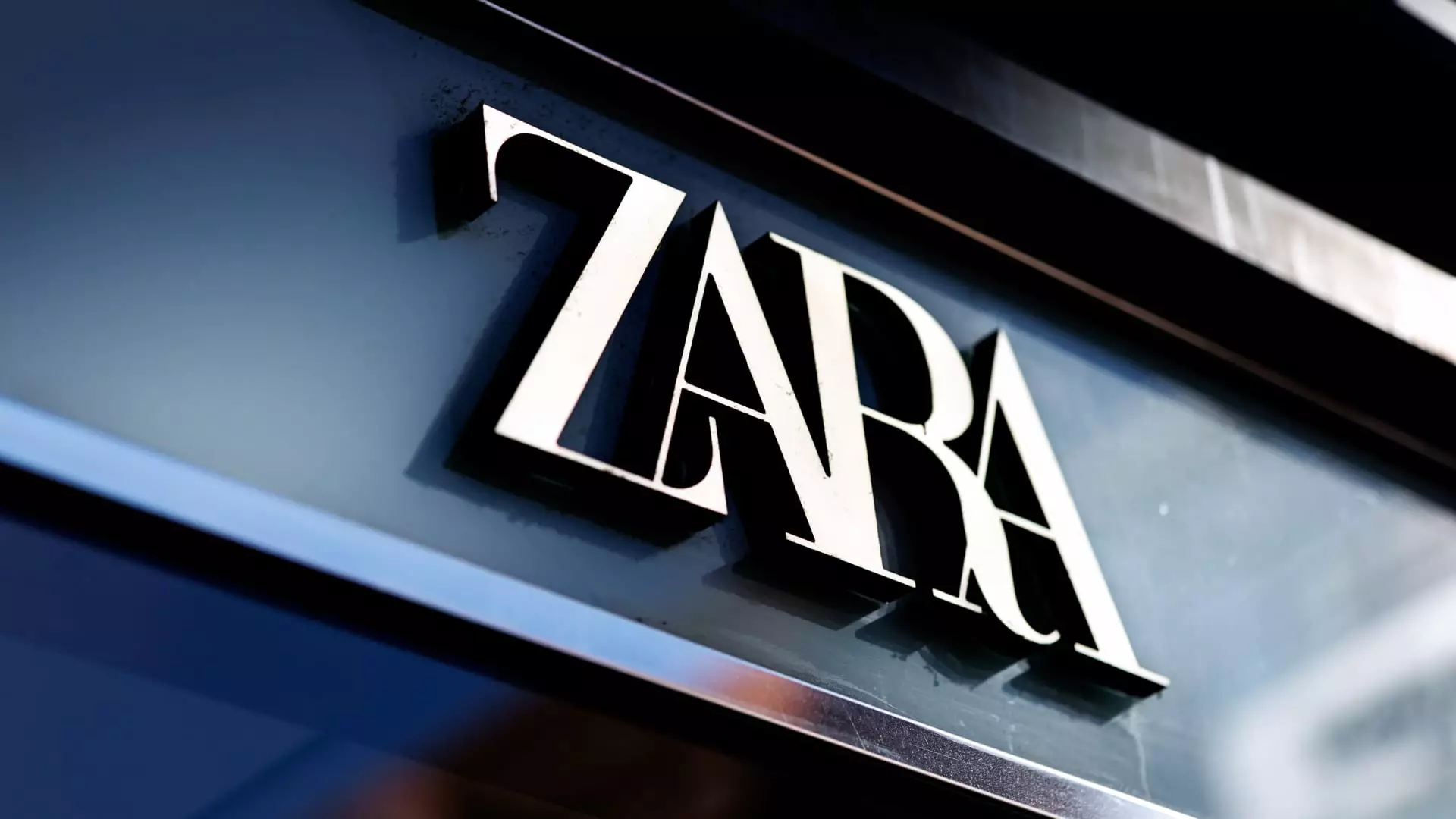In a dismal reveal, Inditex, the parent company of Zara, has witnessed a troubling decline in its stock following the announcement of its latest financial figures. The retailer reported revenues of 8.27 billion euros for the fiscal first quarter, a figure that fell short of analysts’ expectations, generating a palpable sense of uncertainty in the market. This disappointment isn’t just a hiccup; it’s a shocking indicator of Inditex’s position in an increasingly volatile economic landscape. With a net income of 1.3 billion euros, a marginal miss against forecasts, the data reflects a company struggling under the weight of broader consumer reticence and hesitancy, which is becoming a persistent theme in global retail.
What stands out, however, is the revelation of a slower start to the summer sales season. Recorded growth hovered at a meager 6% in constant currency terms—significantly down from the 12% reported during the same period last year. As if to punctuate this downturn, shares plummeted by 4.4% in early trading, an unmistakable signal that investors are uneasy about Inditex’s growth prospects. Such figures elicit concern, especially as the company is often considered a bellwether for consumer behavior in the retail sector. When a titan like Inditex falters, it inevitably raises alarms about the general economic climate.
Consumer Sentiment Under Siege
Gorka García-Tapia Yturriaga, Inditex’s head of investor relations, articulated the uncertainty, stating, “The current environment is difficult to predict.” This acknowledgment does little to soothe the unease that pervades the marketplace. The looming apprehensions regarding tariffs have left many scratching their heads about their potential effects on consumer expenditure. Inditex, which has diversified its production across various geographies, including Asia, Spain, and Brazil, hopes that this structure will mitigate some impacts. However, such optimism feels unwarranted in an environment riddled with economic headwinds.
Mamta Valechha, a consumer discretionary analyst, made an astute observation regarding the implications of these lackluster results. She posited that they would spark considerable debate about Inditex’s growth trajectory and sustainability moving forward. Critics—the “bears”—will highlight the normalization in performance, raising vital questions about whether the current valuation holds up against a backdrop of a tough retail environment. In contrast, the “bulls” will rally around Inditex’s historical resilience amidst adversity. This division illustrates the schisms in investor sentiment as they grapple with the uncertain future of retail conglomerates.
Facing Stiff Competition and Market Pressures
It’s essential to reflect on the broader competitive landscape that Inditex finds itself navigating. With rising competition from fast fashion disruptors such as Shein and Temu, the challenge extends beyond just economic indicators; it’s a battle for relevance and consumer loyalty in an increasingly saturated marketplace. The vigor of these lower-cost competitors puts additional pressure on established brands, as they must adapt to shifting consumer preferences and price sensitivities.
Furthermore, recent price adjustments driven by heightened tariffs on Chinese products further complicate matters. Retail giants like Inditex, though vigilant, are not immune to these changes, which could further sway consumer buying patterns, driving them toward more affordable alternatives. The strategic navigation of these issues will make or break the future for Inditex and its ilk.
Crisis or Catalyst? The Road Ahead
Inditex’s journey from this juncture could evolve into two possible narratives: a crisis or a catalyst. Retailers have always faced trials, but those that adapt to changing consumer landscapes emerge stronger. The resilience of Inditex might ultimately be determined by its capacity to turn this moment of vulnerability into an opportunity for transformation.
While the current numbers are sobering, they might also serve as a wake-up call for companies in the sector to recalibrate their strategies. Adaptation is not merely a reactive measure; it’s an imperative in the fluctuating realm of global retail. Rather than a simple downturn in performance, let these figures initiate a broader conversation about growth, adaptability, and the essence of consumer engagement strategies in a complex economic environment. Absent a proactive stance, the decline of retail titans could quickly turn into a tale of failure, rather than resilience.


Leave a Reply